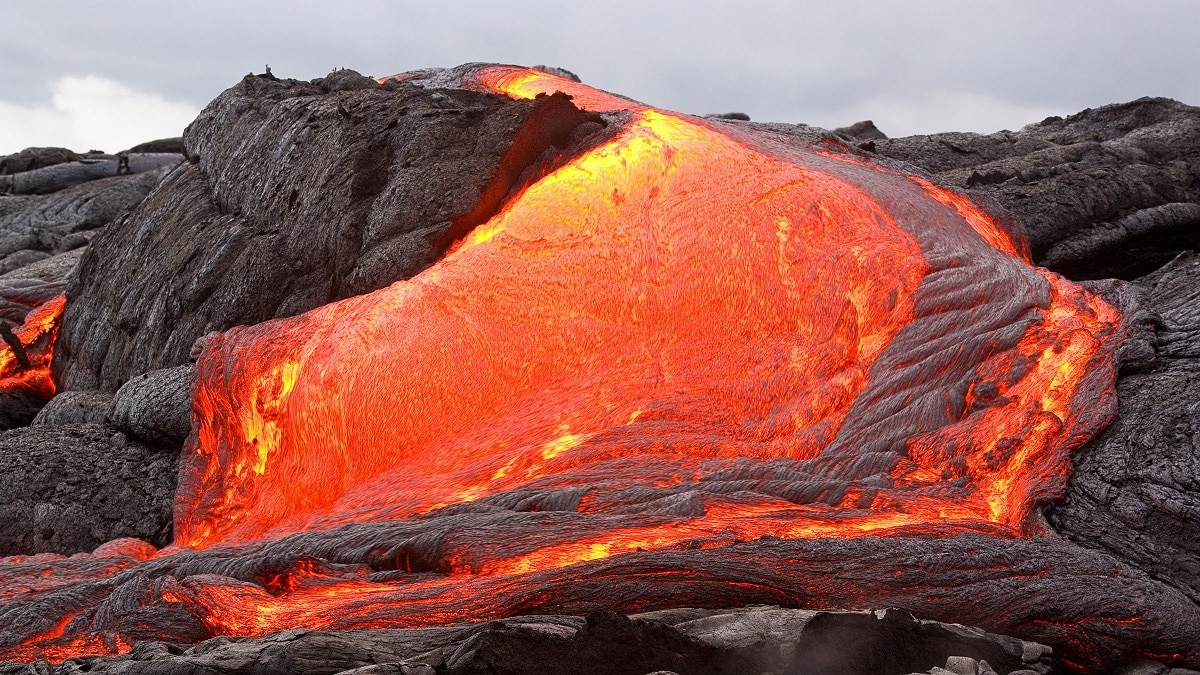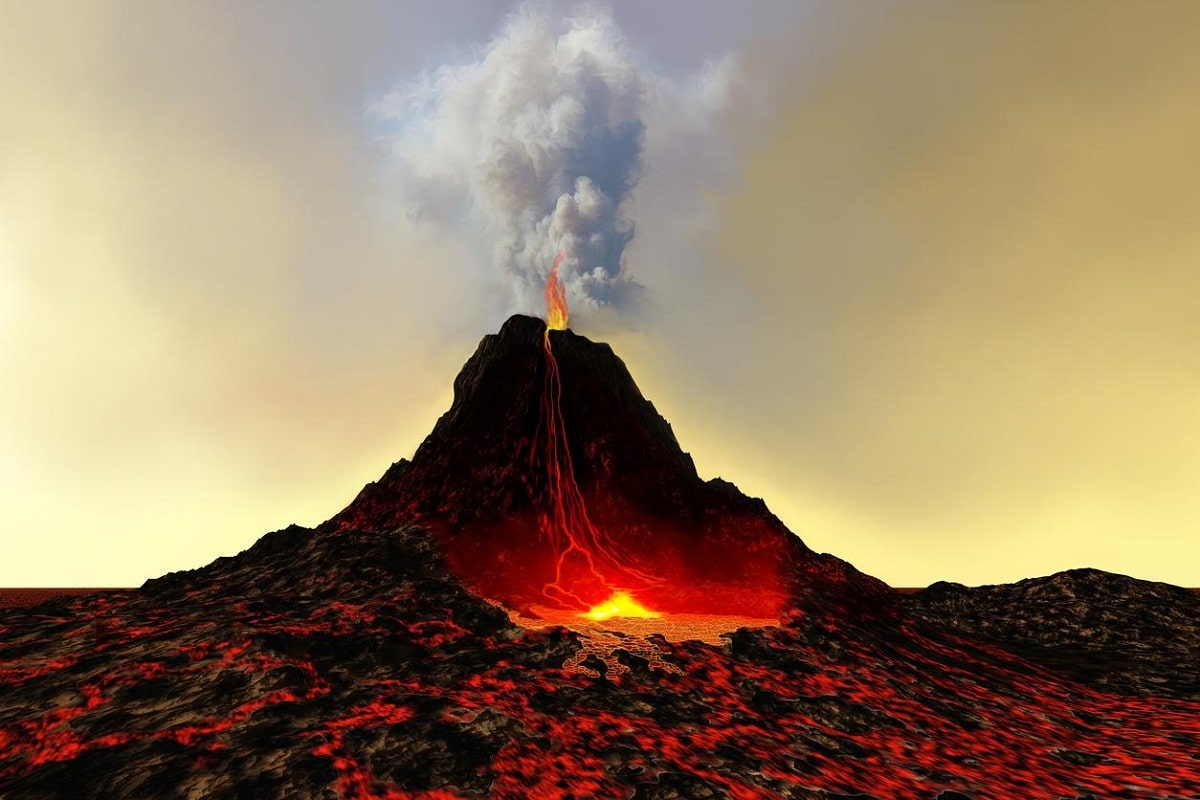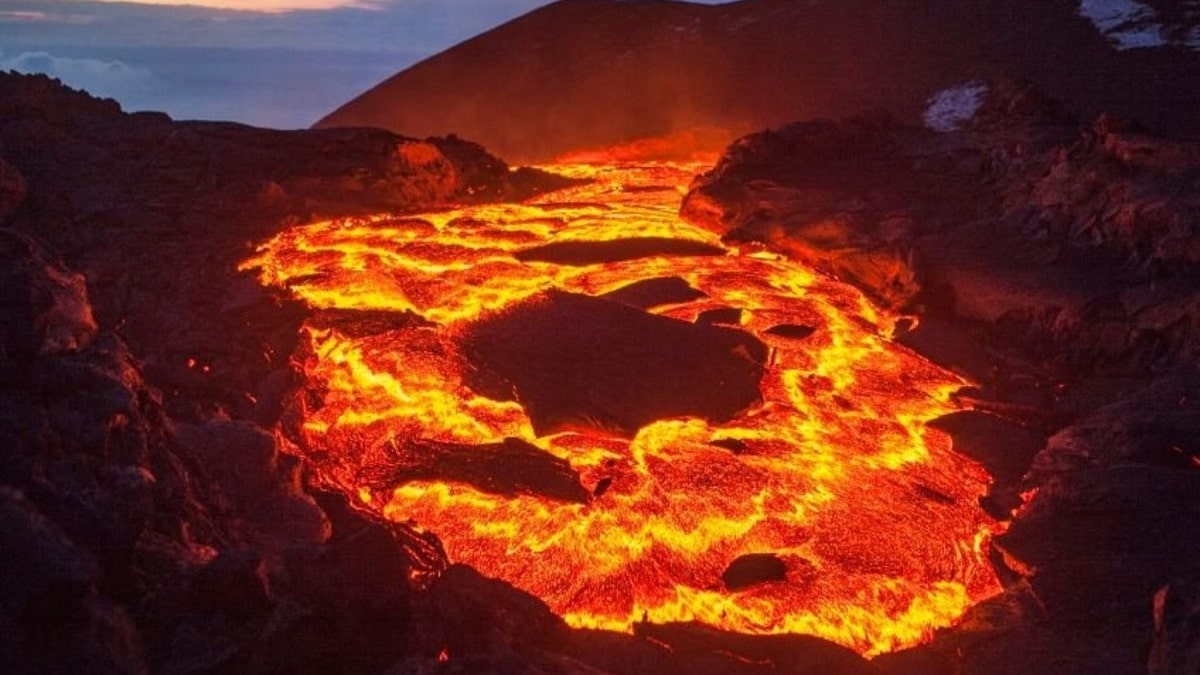
Volcanoes are some of the most impressive geological formations, although their eruptions can sometimes put the populations around them at risk. There are many major volcanic regions on Earth and some craters are active. That is why it is important to understand all the terms related to the topic to better put the concepts in context. For example, what is lava, how it is formed or how it differs from volcanic magma.
In this article we are going to tell you what lava is, what its characteristics are, origin and differences with magma.
what is lava

Inside the Earth, the heat is so intense that the rocks and gases that make up the mantle melt. Our planet has a core made of lava. This core is covered by crust and layers of hard rock. This molten material that forms is magma, and when it is pushed toward the Earth's surface, we call it: lava. Although the two layers of crust and rock are different, the truth is that both are constantly changing: solidified rock becomes liquid and vice versa. If magma seeps through the earth's crust and reaches the earth's surface, it turns into lava.
For all this, we call lava the magma material that has come out of the earth's crust and thus has spread to the surface. The temperature of the lava is very high, ranging between 700°C and 1200°C, Unlike magma, which can cool quickly, lava is denser and therefore takes longer to cool. This is one of the reasons why it is very dangerous to approach the site of a volcanic eruption, even if only after a few days.
Types of lava flows

When we talk about lava, we are actually referring to lava flows, which are layers of liquid lava that form when a volcano erupts. When considering this scenario, the most common view is that of a terrestrial volcano that spews a fairly smooth layer of lava that slowly descends from the slope.
However, there are different situations that produce different types of lava, such as fissure lava. In these cases, the lava layer expanded and covered a large river-like area, unlike the previous case.
There are many factors that affect the type of lava that is ejected (erupted), such as the composition, which affects how it looks when it hardens, so obviously there is a classification that divides it into other types of lava.
The classification is based on their surface morphology and largely depends on their composition and viscosity, which we will examine below:
block casting
This type of lava gets its name from its clumpy appearance. This is because its ingredients are more acidic than usual, which makes it less fluid. These types of lava accumulate because they are less mobile and form clumps. The blocks are irregular and elongated and do not have a sandy appearance. They are lava flows that contain a lot of silica.
In this case, the lava is somewhat liquid, viscous and difficult to remove, so it forms lumps as it tends to stagnate and break, resulting in lumps. It also has an important effect on the sudden discharge of lava, which favors the appearance of these faults. Another consequence of this viscosity is that it hardens quickly.
AA Laundry
These lavas are closely related to massive lavas, as many classifications place them in the same category. Its unique name is derived from the Hawaiian word meaning "pristine lava rock.". They also form groups with flat and uneven surfaces. These blocks are called clinker.
It differs from the previous case in that its composition is not very acidic, so this lava flows better and has a less rough appearance. The lava is of the basaltic type and forms rough and irregular lumps. Its forward speed is very slow, between 5 and 50 meters per hour. This situation makes the ending seem messy and confusing.
Pahoehoe Laundry
These types of lava are fundamentally formed and have the ability to travel long distances. His name also comes from the Hawaiian word meaning "cute." Also called a wire mold, because it looks like a set of arranged strings.
This formation is due to a phenomenon similar to the previous case. Here, too, the surface of this type of lava cools first, and below this layer the lava continues to flow in a liquid state. In this case, the difference is the viscosity of the lava. Due to its lower viscosity and fluidity, it does not destroy the surface solids, but deforms them, so that a series of waves are formed on the surface of this lava that reflect the fluidity of the lava produced inside.
pillow lava
Insulating lava is a layer of lava that solidifies underwater. They get their name from the fact that they actually resemble pillows, stacked on top of each other.
Its shape is round, but there are many different shapes: block, spherical, tubular, etc. Although they are similar in appearance, they vary greatly depending on the type of lava and the conditions in which a condensation phenomenon occurs. Although the cooling was almost instantaneous, the surface was not smooth, with wrinkles, cracks, grooves, and many right angle breaks.
Differences between lava and magma

Basically, you might think that lava and magma are the same thing, but they are not. First, the closer you are to the core, the higher the pressure. Therefore, the more pressure there is, the more gas there is in its composition and the more gas is released to the surface. It also has low temperatures, comes into contact with the atmosphere or water, and once the underwater lava is released, it eventually causes it to solidify, at which point it stops being lava and becomes volcano rock. Although magma and lava are sometimes used as synonyms, the truth is that they are two different terms. Both are related to volcanoes but describe two different concepts.
Magma is the name given to the layers of molten rock in the Earth's crust that are exposed to extreme temperatures. It is made up of liquid, volatile and solid particles. When magma cools, it becomes igneous rock, which can be divided into two types based on its location:
- Plutonic: If it is inside the bark.
- Volcanic: If the magma melts and rises to the earth's surface.
Lava is a natural geological phenomenon that has shaped many islands in the world, such as the Canary Islands, with continuous volcanic eruptions and lava discharges for thousands of years.
I hope you can better understand what lava is and its differences with magma.
Unique in history that with great unparalleled greatness assumed the mission with the success of freeing other peoples after achieving the liberation of our Venezuelan homeland, born in Venezuela, his reflections all extraordinary, this is one of many, if nature opposes we will fight against it and we will make it obey us words spoken in the earthquake of our homeland in 1812, it is another illustrious Venezuelan who accompanied us from 1999 to 2013 they are Simón Bolívar and Hugo Rafael Chávez they converted our Venezuelan homeland and eternally indomitable, today we continue in battle with the Venezuelan president leader in the same steps is Nicolás Maduro Moros the eternal logic we are unbeatable